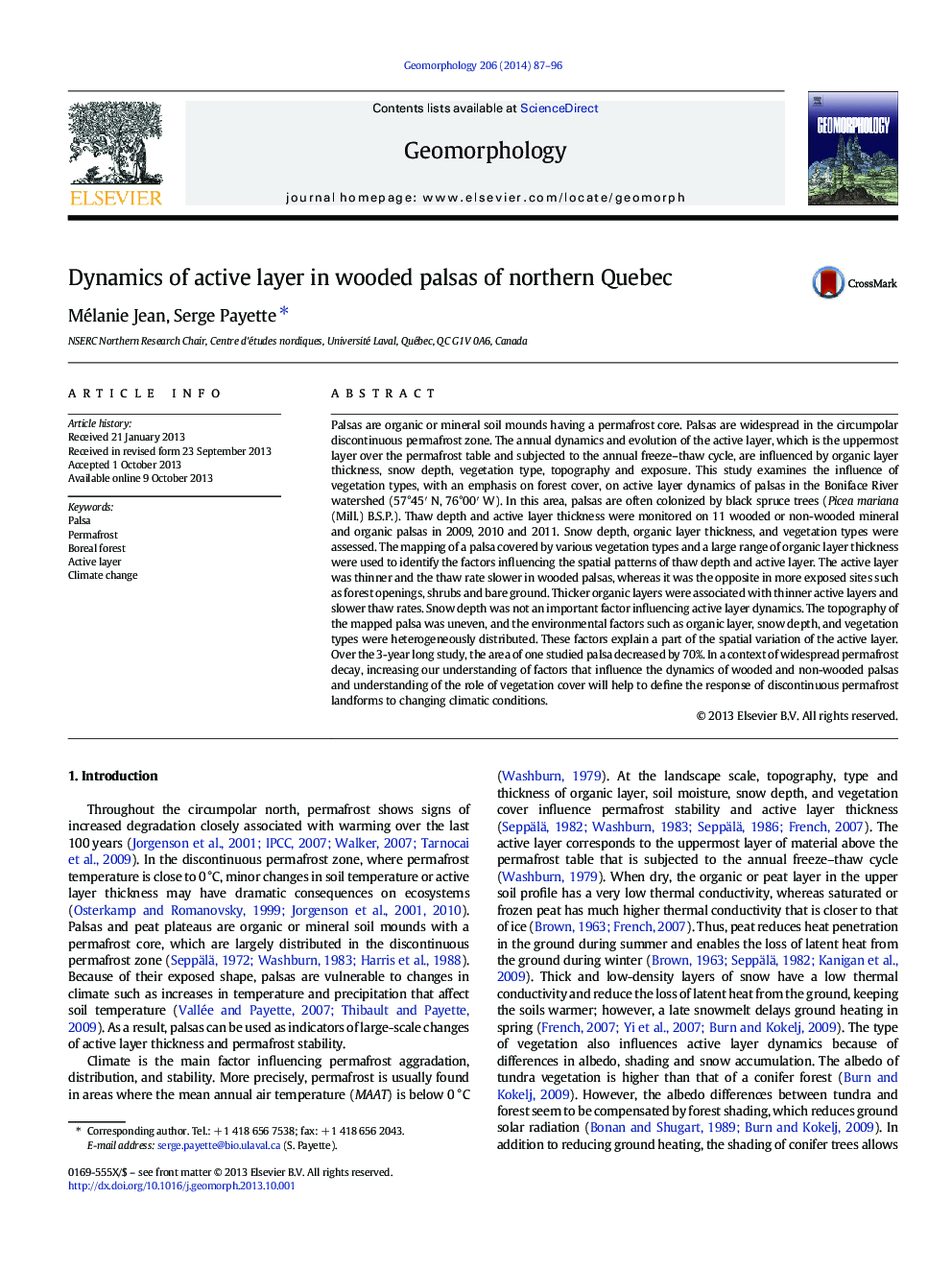| کد مقاله | کد نشریه | سال انتشار | مقاله انگلیسی | نسخه تمام متن |
|---|---|---|---|---|
| 4684647 | 1635443 | 2014 | 10 صفحه PDF | دانلود رایگان |
• We defined active layer dynamics according to the tree cover on palsas.
• Active layer was thinner under spruce cover than under shrub cover and bare ground.
• Thaw rate was faster under shrubs and bare ground than under spruce cover.
• Active layer distribution depends on soil type, vegetation, and position on palsa.
• The response of palsas to future warming will differ according to vegetation type.
Palsas are organic or mineral soil mounds having a permafrost core. Palsas are widespread in the circumpolar discontinuous permafrost zone. The annual dynamics and evolution of the active layer, which is the uppermost layer over the permafrost table and subjected to the annual freeze–thaw cycle, are influenced by organic layer thickness, snow depth, vegetation type, topography and exposure. This study examines the influence of vegetation types, with an emphasis on forest cover, on active layer dynamics of palsas in the Boniface River watershed (57°45′ N, 76°00′ W). In this area, palsas are often colonized by black spruce trees (Picea mariana (Mill.) B.S.P.). Thaw depth and active layer thickness were monitored on 11 wooded or non-wooded mineral and organic palsas in 2009, 2010 and 2011. Snow depth, organic layer thickness, and vegetation types were assessed. The mapping of a palsa covered by various vegetation types and a large range of organic layer thickness were used to identify the factors influencing the spatial patterns of thaw depth and active layer. The active layer was thinner and the thaw rate slower in wooded palsas, whereas it was the opposite in more exposed sites such as forest openings, shrubs and bare ground. Thicker organic layers were associated with thinner active layers and slower thaw rates. Snow depth was not an important factor influencing active layer dynamics. The topography of the mapped palsa was uneven, and the environmental factors such as organic layer, snow depth, and vegetation types were heterogeneously distributed. These factors explain a part of the spatial variation of the active layer. Over the 3-year long study, the area of one studied palsa decreased by 70%. In a context of widespread permafrost decay, increasing our understanding of factors that influence the dynamics of wooded and non-wooded palsas and understanding of the role of vegetation cover will help to define the response of discontinuous permafrost landforms to changing climatic conditions.
Journal: Geomorphology - Volume 206, 1 February 2014, Pages 87–96
